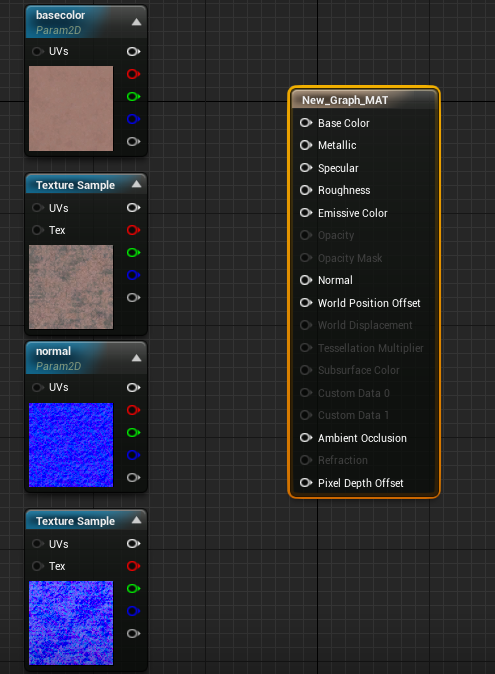Hello again!
Today I want to talk about vertex coloring and how I used this method in order to blend between different textures.

But what is vertex coloring?
Vertex coloring is a way of utilizing the vertices on your mesh in order to paint in an already done texture. For this blog, I am going to show how I blended between two concrete textures with vertex coloring.
I started off by making a new material and inside the material editor, I imported the diffuse color and the normal map samples, each from a different texture. In my case, I am using a light red concrete wall texture and the second texture is a damaged version of it.

With these textures, I added two Linear Interpolation node (LERP), which allows you to blend between two inputs with the help of an alpha input. In my case, I used the LERP nodes to blend between my diffuse colors and normal maps.

After that, I used the alpha output from the vertex color node in order to connect it with the alpha inputs for the LERPs.

The LERP outputs are then connected to a regular multiplier (each of their own), and they are multiplied with the RGB output from the vertex color node.

And here we have a simple material setup for us to vertex paint, but in order to start painting, you need to go into paint mode (next to place mode) disable the RGB channels and enable the alpha channel.

All you have to do now is select a mesh (with this material), and then start painting from the vertex points.

And here we have a simple example of vertex coloring. As I mentioned earlier, you are painting on vertices, which means that you will have better control if you have more vertices. I used this method mainly to blend dirt/ware&tare to our textures. It is a fast and easy way to make variations while using the same material.